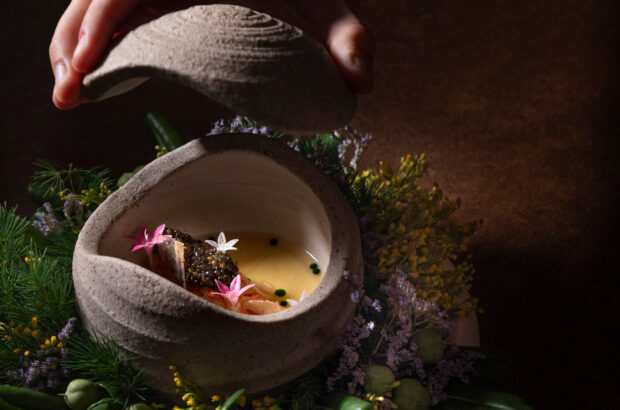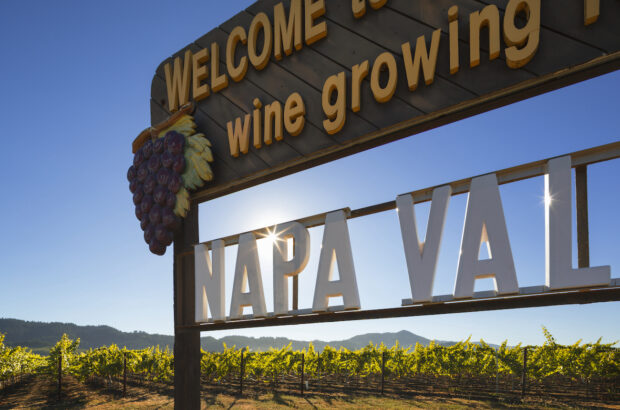In partnership with Beykush Winery, Big Wines and SHABO
The official wine regions of Ukraine were delineated during the Soviet period, and have not been updated. This article focuses on the following key wine-producing areas: the Black Sea region (including Odesa, Mykolaiv and Kherson), Crimea, Zakarpattia and Zaporizhzhia.
The Black Sea region
The largest wine-producing area in Ukraine is the Black Sea region, spread across three oblasts (administrative regions): Odesa, Mykolaiv and Kherson.
Kherson, just north of Crimea, was home to mainland Ukraine’s oldest winery, Prince Trubetskoi, established in 1889. Tragically, the winery and its vineyards were destroyed days after the 2022 invasion. Yet, in a symbolic example of the resilience and mutual support of the Ukrainian wine community, it was able to relaunch as Stoic Winery, replacing the name of the Russian prince and producing its wines using the facilities of Chateau Pinot in Bessarabia.
Further west, Mykolaiv is home to one of Ukraine’s largest wine producers, Koblevo, together with famed boutique producer Beykush Winery, which grows a fascinating array of experimental varieties, from Albariño and Timorasso to Pinotage and Tempranillo, as well as local grape Telti-Kuruk.

Big Wines’ vineyards in Odesa.
The Odesa area, named for the beautiful coastal city that has featured in so much art and literature, alone accounts for nearly half of the national output. This area enjoys a particularly favourable climate for viticulture, with a mix of continental and maritime influences resulting in hot and dry summers. The soils are predominantly humus-rich fertile soils or ‘chernozems’, with sandy loams closer to the sea and the area’s majestic rivers, including the Dnipro. The focus here is on structured red wines, although still and sparkling whites are also produced.
As elsewhere in Ukraine, the Black Sea region grows an eclectic mix of grape varieties, including international classics, such as Cabernet Sauvignon, Chardonnay and Merlot; Rkatsiteli and Saperavi, shared with the ancient winemaking countries of Georgia and Armenia; and specialist 20th-century crossings such as Odesa Black (Cabernet Sauvignon x Alicante Bouschet) and Sukholymanskyi (Chardonnay x Plavai). Odesa Black is showing particular promise with its powerfully structured, richly flavoured wines, while Sukholymanskyi is often used to produce orange wines. Odesa also has growing plantings of the historic Telti-Kuruk, yielding white wines of captivating spice and structure.

The SHABO House of Sparkling Wine, in Odesa.
Odesa’s best-known winery is SHABO, whose main production site now also houses the impressive Wine Culture Centre, educating visitors on the history, terroirs and culture of Ukrainian wine. Another leading winery in Odesa is the recently founded Big Wines, whose expressions of Odesa Black in particular are gaining great acclaim.
Forming the westernmost section of Odesa and Ukraine’s Black Sea coast, Bessarabia is sandwiched between the Dnister river in the east, the Danube river and Romania in the south, and the Republic of Moldova in the west and north. In administrative terms, Bessarabia sits entirely within the Odesa oblast. This lowland area lies on rich chernozems and loams, as well as some limestone. The grape mix includes varieties found in the Black Sea region, with Odesa Black and Sukholimanskyi particularly successful, but also features innovative plantings such as Pinot Grigio and Pinot Blanc.
Bessarabia is home to some of Ukraine’s largest wine producers by volume, including Bolgrad, a large bottler of fortified and table wines with a strong export presence, while smaller wineries with growing reputations include Kolonist, Leleka and Frumushika Nova.

SHABO’s vineyards are managed using modern, minimum-intervention viticultural practices.
Zakarpattia
Bordering Slovakia, Hungary and Romania, Zakarpattia (Transcarpathia) was historically part of the Kingdom of Hungary and, later, the Austro-Hungarian Empire; winemaking here therefore has a unique cultural context. This scenic area has long been famed for its geothermal spas, ancient castles and breathtaking mountain scenery, including Synevyr lake and its eponymous national park.
Western Zakarpattia, around the capital Uzhhorod, was traditionally considered part of the Tokaj wine region. Hungarian influence remains a strong factor, through winemaking families with Hungarian heritage (such as Sass) and grape varieties such as Furmint, Hárslevelű, Kékfrankos, Bakator and Cserszegi Fűszeres. Many others are now grown, with Zweigelt showing particular promise, as well as Pinot Noir, Merlot and Traminer. The soils are predominantly volcanic, and the climate is more moderate than on the Black Sea, resulting in a focus on white wines.
Zakarpattia currently grows around 3,000ha of vines. While some two dozen commercial wineries operate in the region, one of the oldest, largest (with 270ha under vine) and most historic is Chateau Chizay. Owned by Hugo Gutman, it produces Blaufrankish, Traminer, traditional dessert wines and an impressive range of sparkling wines.
Other leading names include Sergiy Stakhovsky, a former professional tennis player turned winemaker, and Terroir, a meticulously run winery near Uzhhorod.

The soils in the Odesa region are predominantly humus-rich fertile soils or ‘chernozems’.
Zaporizhzhia
This storied region was the historic stronghold of the Ukrainian Cossacks, and follows the lower course of the Dnipro river, including cities such as Zaporizhzhia, Dnipro and Kryvyi Rih, hot springs and coastal resort towns. At the time of writing, more than half of this region is under Russian occupation.
In terms of wine production, it is Ukraine’s smallest wine region. Benefitting from the moderating influences of the Sea of Azov, the climate is continental, with hot, dry summers and severe winters; the main grape varieties include Aligoté, Saperavi and Cabernet Sauvignon.

The Black Sea brings moderating influences. Credit: Arsen Fedosenko
Crimea
Occupied by Russia since 2014, Crimea boasts a long and illustrious wine history: ancient Greeks established trading colonies and vineyards on the peninsula’s south coast in the 5th century BC.
Over the centuries, numerous estates have taken advantage of Crimea’s complex geology and favourable natural conditions, with a drier continental climate in the northern lowlands and subtropical maritime conditions on the southern coast. Crimea is home to many of Ukraine’s historical grape varieties, such as Kokur, Gevat Kara, Ekim Kara, Kefesia, Kok Pandas, Sary Pandas and Soldaia. Until 2014, the peninsula accounted for nearly one third of the country’s vineyard area, with 15,000ha planted.

Famed boutique producer Beykush Winery grows a fascinating array of experimental varieties in Mykolaiv. Credit: Arsen Fedosenko
Developing regions
Ukraine is a vast country, and while its northern half was long considered unsuited to vinegrowing because of its cold winters and late springs, this is now changing because of global warming and improved viticulture. Since 2014, many new wine projects have blossomed in unexpected areas, including Kyiv, where Biologist is now a very popular urban winery. Boutique producer Kulinichenko is another exciting winery to watch.
The western province of Podilia is also developing, with the Bakota Bay district now established near Khmelnytskyi. The Vinoman winery is Ukraine’s northernmost, based near Chernihiv and releasing an impressive Riesling and Cabernet Franc. Viticulture is also expanding in the western province of Lviv, where the cool continental climate favours new-generation PIWI varieties such as Solaris and Johanniter.







